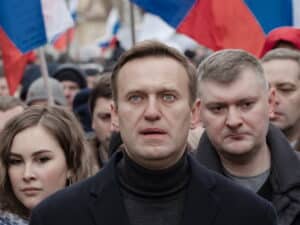The parliamentary elections held in Russia from the 17th to the 19th of September have resulted in a win for United Russia, the ruling pro-Putin party. In the first official results, after 95% of the votes have been counted, United Russia obtained nearly 49% of the vote, the Communist Party 19%, the nationalist LDPR party 7%, and the Fair Russia party 7%. These four parties were also in the previous parliament, and all stand by Putin and enjoy the support of the Kremlin. A party must obtain at least 5% of the votes in order to gain a seat in parliament, and a new party called “New People” (rumoured to hold the Kremlin’s approval and support as well) also passed the threshold to enter parliament. Other parties partaking in the election did not gain more than 5% of the votes, and will therefore not be included in parliament. Turnout for these elections was low, approximately 45% according to the election commission, much like the previous elections in 2016, with 47.8% voter turnout.
These outcomes did not come as a surprise, and are unlikely to change the political landscape. Though United Russia holds on to its constitutional majority, there does seem to be a small drop in the support for the party: the results for United Russia dropped from 54% of the votes during the last elections to 49% this year, and there seems to be a spike in support for the Communist Party. During the 2016 parliamentary elections, the Communist Party obtained 13.44% of the votes, whereas for these elections, the party obtained almost 20% of the votes. Nevertheless, United Russia retains its majority in parliament with these outcomes, and as the other parties, including the Communist Party, often stand together with United Russia, there will probably be little political change. It is worth noting, however, that the figures presented here are the official figures and given the scale of fraud, lack of observers, and opposition repression they are not directly representative of the will of the Russian electorate.
Tactical Voting
One of the potential reasons why the Communist Party has grown so much is through a tactical voting campaign set up by the organisation of Alexei Navalny, the opposition politician who is sitting out a two-and-a-half year sentence. The tactical voting campaign was set up in an attempt to weaken the position of United Russia, and often encouraged people to vote for the Communist Party instead. The Kremlin has forbidden the campaign, but nevertheless it seems to have taken some hold.
Election monitoring
Election monitoring was limited this year as fewer parties were permitted to monitor, and the process of monitoring itself was made more difficult. The Organization for Security and Cooperation in Europe (OSCE) did not send observers due to the restrictions imposed by the Russian authorities. Officially, the observers were welcome to monitor the elections, but restricted to a limited number of personnel, officially due to the pandemic. Due to these restrictions the OSCE did not monitor the elections.
Not only were there fewer election monitors, the Kremlin has also set up processes that make election monitoring more difficult, for example by encouraging online voting and spreading the elections over three days. The official reason for these steps was the coronavirus, but critics say the extended poll lacked transparency and created paths for abuse.
Voter fraud
There have been numerous reports of election fraud. Golos, an election watchdog, recorded thousands of violations, including ballot stuffing, forced voting, and some voters voting multiple times. The combination of voter fraud and opposition oppression have given these elections the reputation of the ‘least free elections’ in twenty years. The Russian interior ministry nevertheless claims that no “significant violations” were registered, and that therefore the results are legitimate.
Sources: BBC, Tass, Reuters, OSCE,
Photo: Flickr



